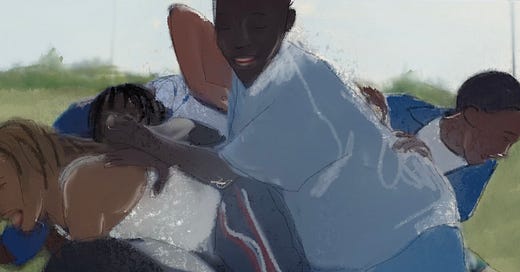In this week’s essayette #92, Filling the Frame, Ross Gay writes about the academy-award-winning film Moonlight.
But he doesn’t actually focus on the film overall. Instead, he draws our attention to very specific details of the film: children at play. He draws our attention to these scenes—two distinct scenes—and holds our attention there. It reminds me a lot of what Georgia O’Keeffe said (which we talked about recently) about painting flowers so close up that even those who are too busy to look at flowers would have to see them after all.1
This technique of framing one small detail to illuminate a greater whole is such a crucial one for writers to know and understand. We’ll look and play with this technique in our short, structured writing exercise this week. This technique one we can practice over and over again, like vibrato on the violin or something, so that eventually we can not only do it with ease, but also gain a clear, clean instinct for when to zoom in this way with our cameras. Those instincts are what ultimately allow us to move from one level of writing fluency to the next.
I very much think of this technique in writing—and the decisions we make in the writing overall—as similar to camera work. We use our camera lens to draw





